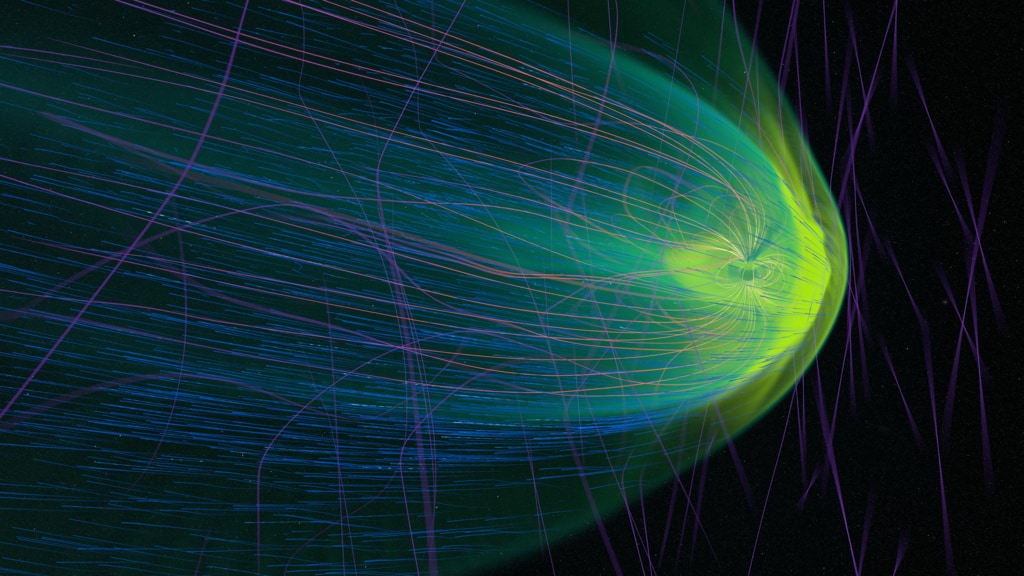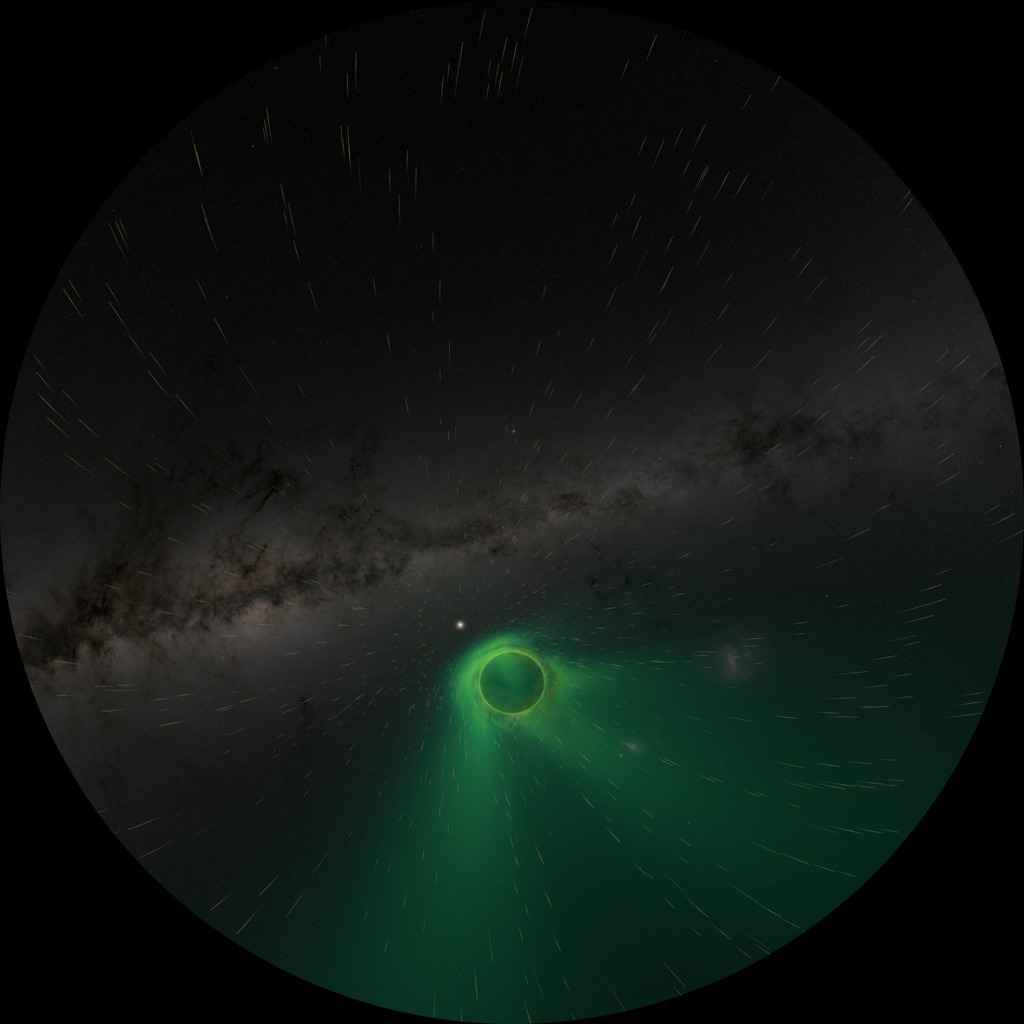Solar Storm Excites Martian Magnetosphere
On September 13, 2017, a coronal mass ejection from the Sun arrived at Mars. This data visualization shows how solar-wind-induced currents (green colors) and magnetic fields (pink lines) combine with Mars' relatively weak and irregular native crustal magnetic fields to contribute to Mars’ "hybrid" magnetosphere. The visualization demonstrates how, in the hours before and during the storm, Mars’ magnetosphere changes as the planet rotates to show a constantly changing magnetic "face" to the solar wind. Earth's magnetosphere, in comparison, has a strong global magnetic field thanks to liquid metal moving inside our planet's core, so currents induced by our planet’s crust or solar activity are less significant components of the magnetic activity around Earth.
Mars's magnetosphere experienced a strong solar wind storm on September 13, 2017. The induced magnetic field, generated by the storm's plasma interacting with the Martian ionosphere, was significantly stronger than usual and exceeded Mars' crustal magnetic field present in many localized regions of the planet.
This data visualization shows time passing at 30 data simulation minutes per animation second. The solar storm can be seen contacting the Martian magnetosphere at 0:17 in the movie. The green current density shows where magnetic current is strong. Lines tracing out the magnetic field are purple in regions of weaker magnetism, and orange-yellow where the magnetic field is strongest.
This data visualization shows the same data as above but from another angle.
This data visualization shows the same data as above but from a side-on viewpoint that does not change.
This data visualization shows Mars' magnetosphere for exactly 1 hour before the storm begins. The data driving this visualization is 6 times more frequent, at 5 data simulation minutes per animation second, so the visualization appears to be moving in slow motion. This makes it easier to analyze certain dynamics in Mars' magnetosphere. The viewpoint is side-on and does not change.
Credits
Please give credit for this item to:
NASA's Scientific Visualization Studio
-
Visualizer
- Andrew J Christensen (SSAI)
-
Producer
- Joy Ng (eMITS)
-
Scientists
- Yingjuan Ma (UCLA)
- Robert Lillis (University of California, Berkeley)
Release date
This page was originally published on Monday, April 7, 2025.
This page was last updated on Monday, April 7, 2025 at 12:16 AM EDT.
Related papers
Ma, Y., Fang, X., Halekas, J. S., Xu, S., Russell, C. T., Luhmann, J. G., et al. (2018). The impact and solar wind proxy of the 2017 September ICME event at Mars. Geophysical Research Letters, 45, 7248–7256. https://doi.org/10.1029/2018GL077707
Datasets used
-
BATS-R-US (Block Adaptive Tree Solar-wind Roe Upwind Scheme)
ID: 1236BATS-R-US was designed using the Message Passing Interface (MPI) and the Fortran90 standard and executes on a massively parallel computer system. The BATS-R-US code solves 3D MHD equations in finite volume form using numerical methods related to Roe's Approximate Riemann Solver. BATS-R-US uses an adaptive grid composed of rectangular blocks arranged in varying degrees of spatial refinement levels. It is part of the Space Weather Modeling Framework.
Credit: What Sustained Multi-Disciplinary Research Can Achieve: The Space Weather Modeling Framework
This dataset can be found at: https://clasp.engin.umich.edu/research/theory-computational-methods/space-weather-modeling-framework/swmf-downloadable-software/
See all pages that use this dataset
Note: While we identify the data sets used on this page, we do not store any further details, nor the data sets themselves on our site.

